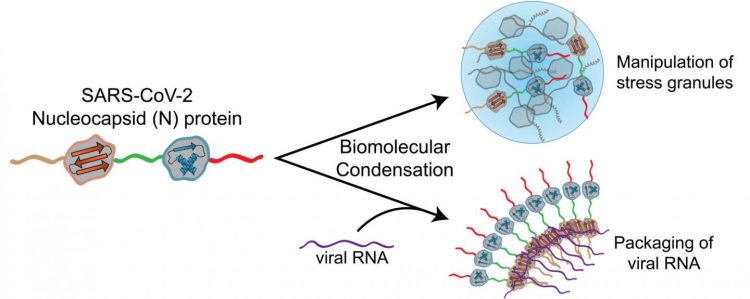hidden
Over 10 years experience of Traceability Solutions

By Pharmatrax Author
Category: News
 No Comments
No Comments
Researchers identify protein that may help SARS-CoV-2 spread through cells
Researchers have found that the SARS-CoV-2 nucleocapsid protein may help the virus to spread from cell to cell, providing a drug target.
Researchers have released a paper identifying a protein encoded by SARS-CoV-2, the virus that causes COVID-19, that may be associated with the quick spread of the virus through cells in the human body.
From Colorado State University, the US, the team used a bioinformatics approach to highlight key characteristics of the virus that they say could one day be important in the development of a treatment for SARS-CoV-2.
They found that the nucleocapsid (N) protein in the SARS-CoV-2 virus has a low-complexity domain that may utilize liquid-liquid phase separation to facilitate the packaging of viral RNA into new virus particles that can infect neighboring cells. The N protein may also be associated with reducing an infected cell’s anti-viral stress response. Cells often form stress granules, a type of biomolecular condensate, to respond to a change in their environment and these granules may have an anti-viral effect.
“The cell can react to a stress event by making changes in the cellular environment including making these modifications to some proteins,” said Eric Ross, one of the researchers.
“But viruses obviously want to avoid a cell’s defenses,” researcher Sean Cascarina added. “They want to be infectious, so sometimes they are able to regulate these stress granules.”
They say that by hijacking the normal stress response, the virus may be able to reduce the cell’s antiviral response capabilities.

The researchers suggest the application of this research could be for the development of SARS-CoV-2 treatments once a person has already contracted the virus, rather than preventing infection like a vaccine.
“Medically, if you could counteract the virus’ ability to interfere with a cell’s immune response, then you could help the cells to fight off the virus,” said Ross. “I think this falls into the category of very basic science: if we understand the viral process, then conceivably we can try to design a drug that reverses that process.”



